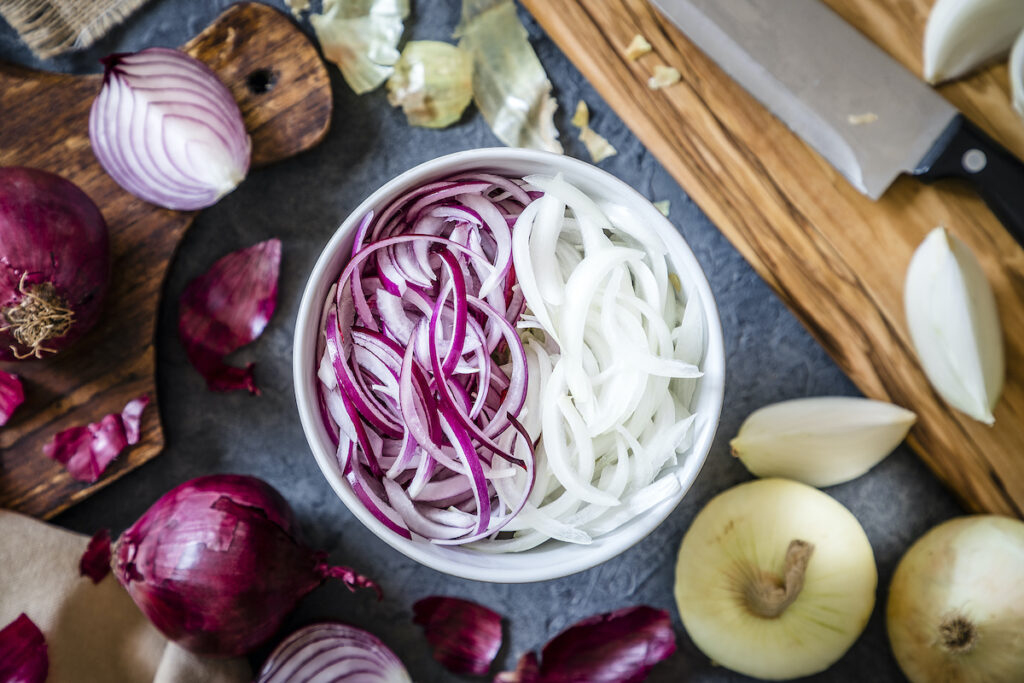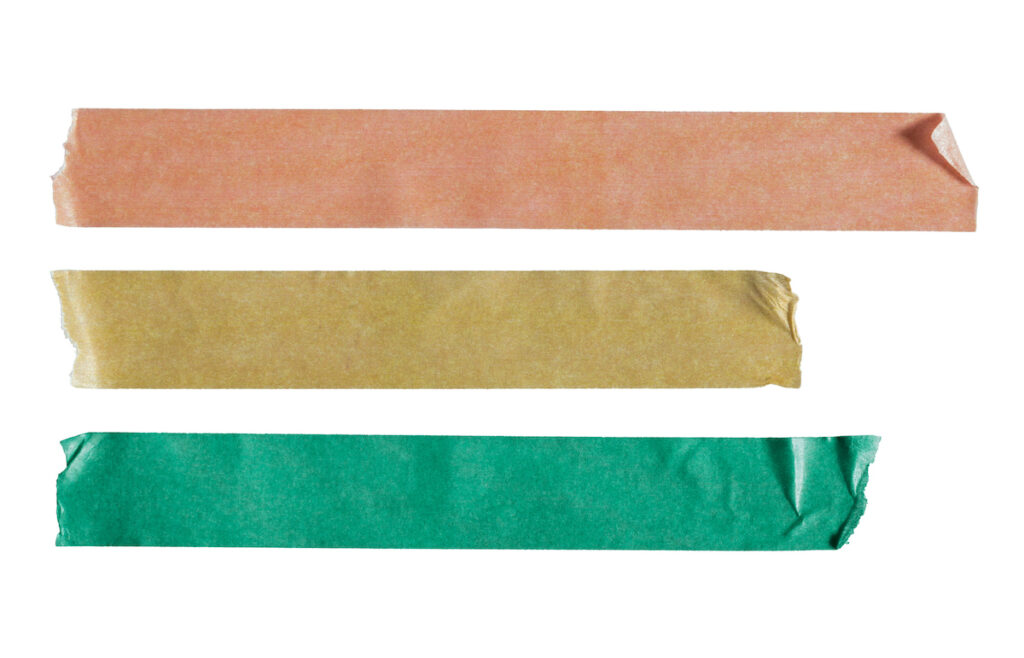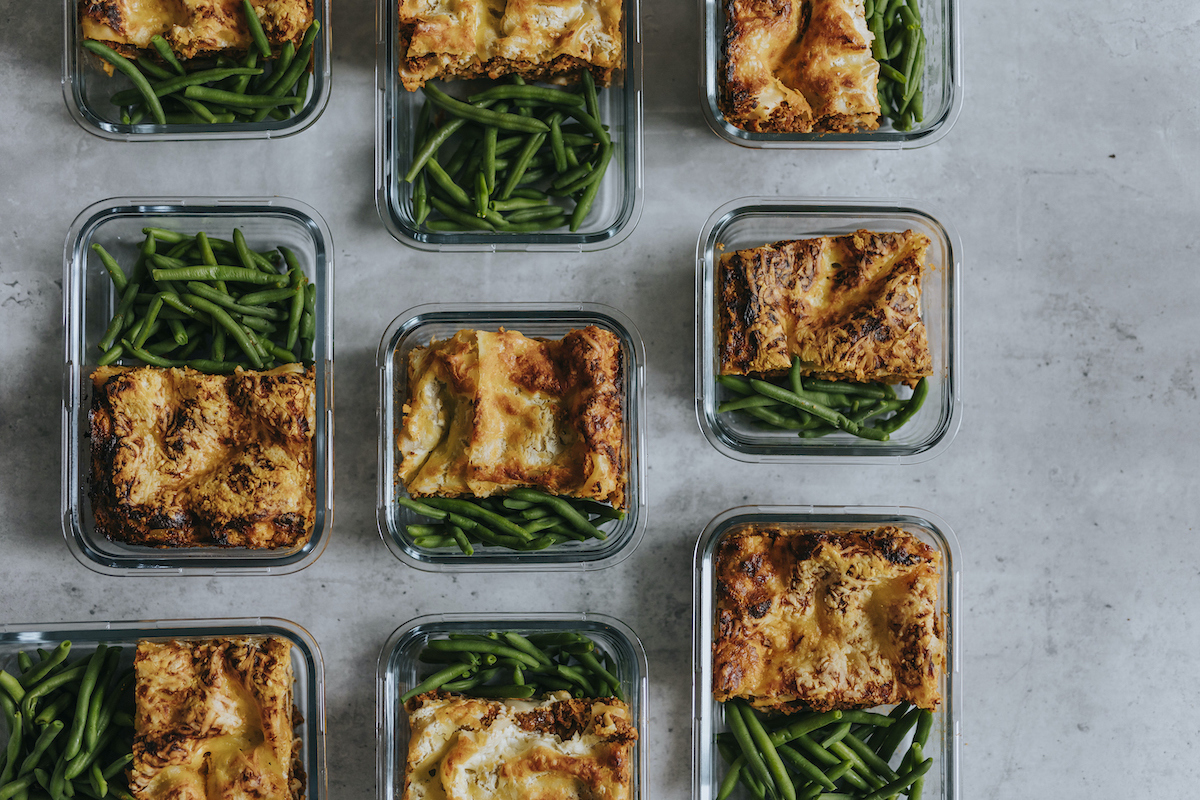I love food. I love cooking. I love cooking for other people. But I have a deep, unshakable hatred for weekly meal prep.
I’ve tried to make it work. I’ve stood over sheet pans on Sunday afternoons, roasting broccoli until the kitchen smelled faintly of sulfur, portioning out tidy mounds of chicken and rice into identical little plastic containers. I’ve upgraded to glass, hoping that a sturdier vessel might redeem the bleakness of four-day-old poultry. It didn’t. I’ve stacked my fridge with Mason jar salads that slowly collapsed into themselves, Mason jar noodle soups waiting for their just-add-water reveal, Mason jar overnight oats (so many Mason jars).
Don’t get me wrong. There were stretches when I was “good” at it — when I mustered the discipline to churn through the same routine week after week. But it always felt a bit like CrossFit: I could admire the people who seemed to thrive on it, but I knew, deep down, it wasn’t my cup of jasmine-green tea.
I tried it all, and continued to fail spectacularly (by which I simply mean the local Chinese joint got to know me very well) until last fall, when I discovered there is a better way.
Instead of slogging through full meals every Sunday only to stare at sad leftovers by Thursday, I now do a quarterly Big Prep Day. It’s like cooking for a holiday, only with fewer relatives and more music. There’s planning. There’s budgeting. And yes, you know there’s a spreadsheet — because culinary chaos is only fun for so long.
That doesn’t mean I never touch my cutting board during the week. I’ll still chop up some vegetables to snack on with hummus, or cook off an extra pot of grains to stretch into chilled salads. But compared to my old routine, these are quick touch-ups, not hours of forced labor.
I order in all the groceries, as well as the largest iced coffee Dunkin’ can legally sell, then queue up seasonal TV or a playlist that can carry me through chopping, roasting and stirring. Then I just get at it: one big mise en place, one big protein cook-off, one big baked goods batch.
Everything gets prepped and batched in freezer-friendly containers and by the end of the day my freezer looks like a shrine to future meals, and I feel like I just pulled off Thanksgiving on a random Saturday.
Why it works and who it’s for
I know, I know. This whole Big Prep Day system might feel … overwhelming. Like, “Do I need a spreadsheet? A playlist? Two pounds of garlic?” Take a breath. It’s not meant to add stress; it’s meant to save you.
I actually developed it after reading Kendra Adachi’s “The Lazy Genius,” a book that, not to be dramatic, really changed how I move through my own life. She has these smart, compassionate ways to make tasks that feel exhausting — or impossible, if you have any form of executive dysfunction — suddenly seem, if not simple, doable. Two principles stuck with me: Ask the Magic Question: “What can I do now to make something easier later?” and Batch It.
Again, I love food, but I still don’t necessarily want to cook every single night (or, for the sake of my health or budget, end up ordering in more than I planned). So I took Adachi’s “Batch It” principle and applied it to meal prep in a big, glorious way: plan, cook and freeze in one day, with good music, strong coffee and some momentum.
For me, it’s easier to plan, easier to execute, and — dare I say — actually kind of fun.
We need your help to stay independent
And of course, this isn’t for everyone. If weekly prep sparks joy for you, keep doing you. But if it feels like a slog, or if you find yourself fatigued by Sunday’s pre-made meals mid-week, this approach might just change the way you feed yourself. It tends to work best for people who are already a little fluent in basic meal prep — you don’t need to be a professional, but you should feel reasonably comfortable chopping, roasting and freezing. It’s also great for anyone heading into a busy season of life: a new job, a shuffled school schedule, a month that looks impossibly full.
It might be less practical if your freezer is already overflowing, if you really hate re-heated meals or if standing in the kitchen for a full-day cooking marathon feels like punishment instead of pleasure. Think of this as one tool in your kitchen toolkit — not a mandate, just a way to reclaim your evenings and simplify feeding yourself when life gets busy.
Prepping for prepping
My Big Prep Day always begins with a scribbled list — nothing fancy, just a notebook page split into columns. Seasonal Favorites. Soups (yes, in the fall they get their own column). Recipes to Try. Baked Goods. And from there, I just start brainstorming. Once the page looks like a chaotic diner menu, I start shaping the list into a few manageable choices per column.
Since I’ve been doing this for a few seasons, I’ve reached a point where I try for four or five types of entrees, two or three types of soups, one new recipe to try freezing, and a few freezable baked goods or doughs. But feel free to go easy on your first round — even just making and stashing extra portions of one or two reliable family crowd-pleasers like lasagna or baked ziti is a nice gift to your future self.
Now, when you’re planning food, I think it’s important to pause and recognize that there’s always a jumble of priorities: what’s in season, what’s nourishing, what your budget allows, how much freezer space you actually have, whether you’re craving comfort or variety and any dietary needs in the mix. You can’t give equal weight to all of them.
At best, you can really hold two or three at a time.
So I choose, season by season. This fall, that looks like leaning into squash, pumpkins and root vegetables; keeping an eye on budget; and building in a few routine-friendly meals that support my current health goals. Your list might look different. The point is to decide which factors matter most right now and let the rest go quiet for a while. It makes the whole project less overwhelming — more a compass than a straitjacket.
From there, I usually let the proteins decide. This round, chicken breasts and chicken sausage became my anchors: affordable, versatile, and easy to batch. You can start with proteins and build around them, or just let your columns dictate. Either way, the point is to corral chaos into a plan.
For context: we’re just a little family of two, eating dinner at home most nights even with hectic schedules. To make Prep Day worth it, I aim for recipes that yield about 6 to 8 servings. That’s enough to cycle in three or four dinners over the course of a quarter — plenty to be useful, but not so much that it becomes monotonous.
Ultimately for me, this season’s scribbles ended up looking something like:
Seasonal Favorites: green chili chicken + black bean enchiladas, pumpkin pasta bake with chicken sausage, homemade hamburger helper, breakfast burritos
Soups: curried chicken + coconut, lentil, spicy black bean
Recipes to Try: chicken sausage cassoulet
Baked Goods: pumpkin pancakes, snickerdoodle dough, biscuit dough
The page is chaotic and yet deeply familiar. Most of these are dishes I could make on muscle memory — which is the point. Prep Day works because I don’t have to stop every 15 minutes to measure cumin or double-check how many eggs go into the batter. The rhythm is the thing: chop, stir, taste, stack, label, repeat.
Once I’ve got my lineup, I transfer everything into a spreadsheet. Each recipe goes in with its ingredient list, which doubles as my grocery checklist. I keep a running tally of costs as I go and I always include basics like olive oil, flour, salt and spices just so I don’t get halfway through The Big Prep Day and realize I’m out of paprika.
Pro tip: print your spreadsheet and stash them in a folder. It sounds fussy, but if you find this is the right system for you, you’ll enjoy having them to look back on for reference.
No Prep Day would survive without the right tools. My MVPs are unglamorous, but steady: a tower of reusable deli tubs (soup-forward household, remember), and foil takeout pans with cardboard lids — the kind you get from a red-sauce joint — which I used for years before upgrading to freezer-safe glassware. And yes, washi tape and markers for labeling. Twee? Absolutely. But if I’m going to stack a dozen enchiladas in the freezer, why not make them cute?
The night before, I stage the kitchen: groceries ordered, counters cleared, knives sharpened, the KitchenAid and rice cooker sitting ready like soldiers on parade. The day itself is a marathon and anyone who’s worked a line knows the advice: take care of yourself. I start with breakfast — typically sourdough toast with avocado and a snowfall of everything bagel seasoning — and keep water alongside the coffee. For snacks, I graze rather than feast: dried apricots, dates with almond butter and sea salt, cucumber rolled with herby cream cheese and lunch meat. Enough to keep me upright, not enough to blunt my palate.
The rhythm of the day is built around resets. Once casseroles are in the oven and soups are humming on the stove, I clear scraps, load the dishwasher, and wipe counters. A clean slate makes the next round easier. Then I step outside for a dose of light — a quick walk with the dog while my boyfriend takes a turn stirring the pots — before heading back in.
By the end, I reward myself: a bowl of pasta held back from the batch, a few cookie dough balls baked off just for me. I still remember the first Big Prep Day. Sliding the last tub of soup into the freezer, taping a handwritten inventory to the door, and standing back — it felt like proof that I had done something concrete to care for my future self. And as you get older, you start to realize that’s one of the nicest feelings there is.
The Big Prep Day: How it actually unfolds

(Carlosgaw/Getty Images ) Red and white onions
The morning of The Big Prep Day, I start by giving everything a proper once-over: counters cleared, knives sharp, music queued, coffee poured. Then I turn my attention to the produce. Anything that will be used across multiple recipes — onions, peppers, garlic, carrots, herbs, sweet potatoes, celery — gets chopped, batched, and set aside all at once.
If the day calls for nine onions, I chop nine onions. Into a large bowl, a deli tub, or a flat zip-top bag they go. Whatever keeps them contained and easy to grab while moving through the day. The goal is simple: minimize repeated trips to the cutting board and maintain a sense of flow.
Next comes the proteins. Chicken breasts for the enchiladas and soups get grilled, pork or beef browned and drained. If meat needs cubing, shredding or portioning, now is the moment. Once proteins are ready, any grains or pasta needed for casseroles or soups get cooked, drained and set aside. By this point, the kitchen usually needs a little reset—a quick sweep of the counters, a rinse of the tools that have been running hot all morning, maybe a refill of coffee.
Then, I start actually cooking. I usually begin with the soups, because they need time to simmer and deepen in flavor. For sanity’s sake, I focus on one recipe at a time — bring it to the point of simmering, then move on — rather than juggling three half-finished soups and risking culinary chaos.
Once the soups are happily bubbling, I turn to the casseroles and pasta bakes. They get assembled, popped into the oven, and the kitchen earns its next reset: scraps cleared, counters wiped, dishes loaded or hand-washed.
Finally, I move on to baked goods, the sweet and comforting finale of the day. Cookies, breads, pancakes, biscuit dough — whatever has made the cut — get formed and, if applicable, baked and cooled. And then comes the best part: labeling, stacking and watching the freezer transform into a tidy shrine of meals ready to pull from across the coming weeks.
I don’t typically like labels

(Wachiwit/Getty Images ) Long orange, yellow and green paper tape
But on Prep Day, labeling is non-negotiable. It’s what keeps your freezer—and your sanity—intact.
You don’t have to get fancy. A strip of tape with the dish name and the date it went into the freezer is enough. Done. That’s all your future self really needs to know. But if you want to go further, you can: jot down allergens, ingredients or even nutrition info—macros, Weight Watchers points, whatever matters to you. Just don’t do it for the sake of doing it; do it for what you’ll actually look for when you’re standing in front of your freezer two and a half months from now, wondering if that tub of curried chicken is still safe, or if it fits your dinner plan.
A few tips to make this even easier:
- Color-code by protein or category: A strip of yellow tape for chicken, green for vegetarian, blue for beef — so at a glance you know what’s in the tub without reading.
- Use washi tape for visual cues: Cute, yes, but it also peels off easily if you want to reuse containers
- Keep a running “Here’s What’s In the Freezer” sheet: A simple table pinned to the door can help you plan weekly meals without digging around.
Using your stash (without feeling like you’re eating leftovers forever)
Just because you’ve spent a day filling the freezer doesn’t mean every meal for the next three months has to come straight from it. In fact, I rarely plan a week where every dinner is one of my prep-day creations (though I absolutely did one particularly rough health week last February, which is one of the bonuses of a system like this!).
Instead, I treat the stash as a backbone.
Freezer meals get a little lift from something fresh: a side salad, a quick slaw, a scattering of herbs, a drizzle of sauce. The enchiladas might come with salsa and sour cream plus a crisp cabbage slaw; the curried chicken soup gets a scoop of rice and a sprinkle of scallions; the pasta bake benefits from a chunk of crusty bread and a bright, peppery salad. These small touches keep things feeling alive and prevent the “ugh, more leftovers” vibe.
The key is flexibility. The stash is there when life is busy, when energy is low, or when you just need a solid meal without thinking too hard. But it’s also a starting point: a base to layer fresh ingredients on, mix with something new, or even transform into a slightly different dish entirely.
And that’s really the magic of it: a day of deliberate cooking turns into weeks of effortless dinners. My freezer isn’t just a stash of meals — it’s a quiet kind of self-care, a way of saying to my future self, “I’ve got you.” And in the end, that’s the thing that makes the whole Big Prep Day worth it.
This story originally appeared in The Bite, my weekly food newsletter for Salon. If you enjoyed it and would like more essays, recipes, technique explainers and interviews sent straight to your inbox, subscribe here.
Read more
excerpts from “The Bite”


